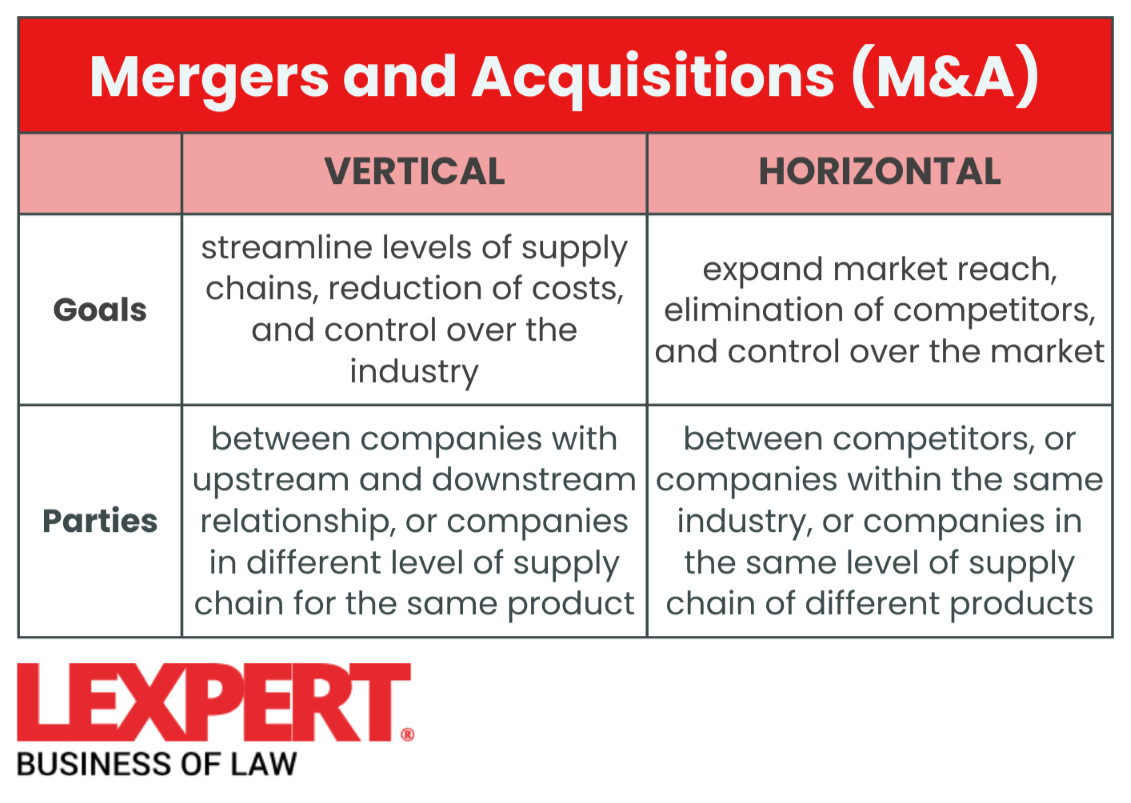A vertical merger is one of the M&A strategies to choose from
When a company wants to boost its bottom line, a vertical merger comes to the minds of its top heads. Usually compared with horizontal mergers, this type of merger and acquisition (M&A) has its own share of pros and cons. Not to mention that there are legal considerations to take note of, for which an M&A lawyer is a big help.
What is a vertical merger?
A vertical merger is one of the many types of M&As that happens when two companies at different stages of production come together. For instance, a production company combines with another that sells its products. Another example is when a company merges with a company that supplies specific parts of its products or a company that assembles its products.
Recent Articles
The similarity between these two companies is that they produce the same product or service, although they are positioned differently on the production line or supply chain. They’re also not necessarily competitors of each other, as compared to horizontal mergers. This type of merger is also called a conglomerate merger.
This video explains more about vertical mergers and its advantages:
To know more about vertical mergers, reach out to the best M&A lawyers in Canada as ranked by Lexpert.
Advantages of vertical mergers
There are many reasons why companies consider a vertical merger, rather than a horizontal one or any other M&A strategy. After a successful vertical merger, companies in this transaction hope to bring out the following advantages:
- enhanced operational control: operation is enhanced through operational synergies, which also results in cost saving and production delays for the new company’s continued product or service
- cost-cutting: an example of this is when a producer and a supplier merges, the new company will save additional costs in the overall production because overhead expenses are eliminated
- pooling of data: independent technologies and other data (e.g., market data), which would have been confidential between the two independent companies, are now made available to the newly merged company
- merging of credit or capital: the financial advantages of one can now be accessed by the other, which strengthens the efficiencies of the two or more aspects of the supply chain
- streamlined of management: redundant management positions or departments in one of the merging companies are abolished, which also contributes to lesser operational costs for the new company
In sum, a vertical merger is sought so that production becomes cheaper, not just by eliminating hurdles along the supply chain, but also other management merging. As such, it’s more concerned with consolidating the different stages of production.
Disadvantages of vertical mergers
As with any other M&A transaction — whether it be horizontal or vertical — there would always be risks and disadvantages to look out for, such as:
- redirected company focus: the long-term goals of one or both the merging companies will be disregarded in favour of the newly merged company, which may divert what would have been their original objective/s
- employment issues: because operations are now streamlined and “improved,” including the restructuring for the new company, some of the important employees may have to be dismissed
- clashing corporate cultures: since the two merging companies are found in the different stages of production or manufacturing, its values and cultures among retained employees may be a problem during the integration phase
To remedy this, it’s suggested that the input of the M&A team, including the M&A lawyers, be considered throughout the process. With proper M&A strategy planning, these disadvantages may be addressed and prevented before it even happens.
What are the differences between vertical mergers from horizontal mergers?
Whether it’s a vertical or horizontal strategy, companies enter into an M&A transaction for many reasons. It depends on their future objectives, their current market standing, and financial capabilities. This is why choosing the right strategy or type of M&A is important, both for the acquiring and target company.
A horizontal merger is the type of M&A where two competing companies that produce similar products or services merge, or when one is acquired by the other. Vertical and horizontal M&As differ in the following ways:

Learn more about what is a horizontal merger and acquisition here.
What are the legal requirements for vertical mergers?
While vertical mergers are said to not violate Canada’s antitrust and competition laws, it’s not always the same for all cases. As a precaution, these laws apply to all types of M&As, subject to certain conditions. Here are some of the things that the two companies involved in the M&A transaction must be wary of:
- the thresholds (i.e., transaction‑size, party-size, and shareholding) set by federal Competition Act and the Investment Canada Act
- the notifications that must be filed with the appropriate regulatory body when these thresholds are reached
- the review process, whether notifications are filed or not, that these regulatory bodies can launch and its possible consequences
Challenges by regulatory bodies can lead to disastrous results. For example, when the Competition Act was violated, the Competition Bureau can challenge the transaction, whether it’s still pending or even when it has already been completed.
Antitrust violations of vertical mergers
The Competition Bureau warns parties of the ways that a vertical merger, or the newly formed company, may violate the competition and antitrust laws through a “foreclosure.” It happens through either of the following instances:
- total input foreclosure: the merged company does not supply inputs to its rival manufacturers
- partial input foreclosure: the merged company increases the price of its charges when supplying inputs to rival manufacturers
- total customer foreclosure: the merged company refuses to purchase inputs from an upstream rival
- partial customer foreclosure: the merged company, which is a distributor, put upstream rivals at a disadvantage in the distribution or resale of their products
You can also check our directory of the largest law firms in Canada if you’re looking for firms or lawyers in view of a pending vertical merger. This directory can be filtered according to province.
Related Articles You Might Like:
Risks of mergers and acquisitions: what they are and how to avoid them





